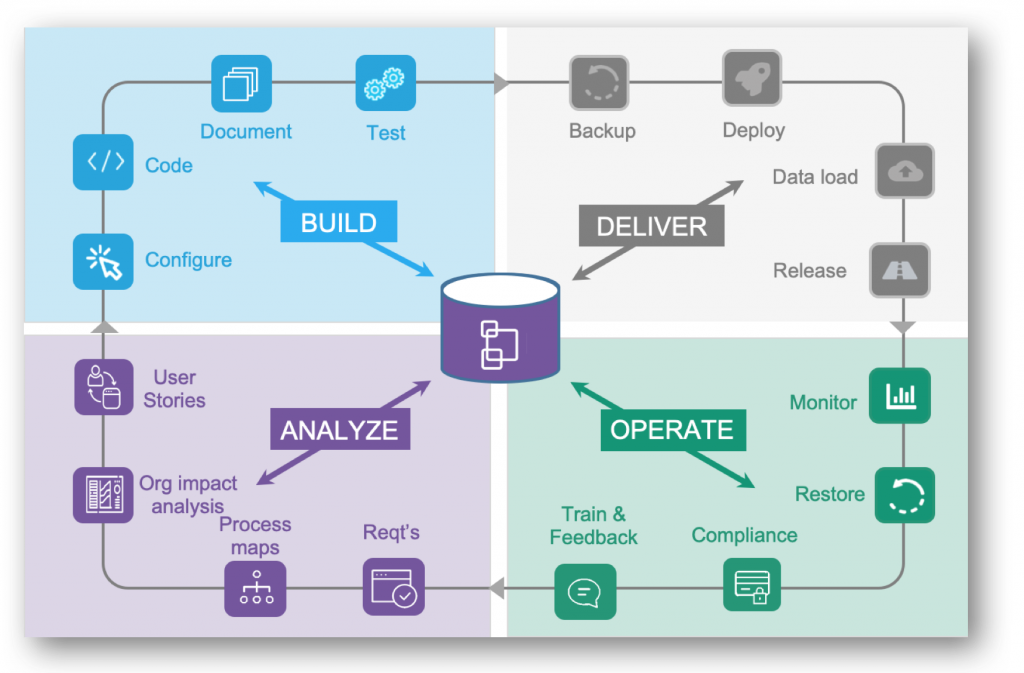
Getting HigherEd back to school in a post-COVID19 world
What is clear is that the future is not clear. But, what is certain is that schools that adapt to the new post-COVID19 world to stay engaged with their students will survive. Speed, relevance and safety are the critical metrics.
Every industry is impacted by COVID-19 and whilst Higher Education would seem to be perfectly poised to pivot to online learning it is far from that simple. By 2012 over 5 million students were taking at least one course online according to the Education Department. Now it is 30% of students according to onlinelearningsurvey.com. But students still need to benefit from in-person education which is so valuable: intellectual debates don’t really work on Zoom, research opportunities in labs and libraries, and the student experience of mixing with others that have different perspectives and life experiences. A bachelors degree and therefore college attendance, is still also critically important when entering the labor market. Finally, higher education is important to the U.S. economy. The sector employs about three million people and as recently as the 2017-18 school year poured over $600 billion of spending into the national economy. Colleges and universities are some of the most stable employers.
THE NEW NORMAL
Higher Ed industry leaders now need to agree on what is required to get students and staff back to school, and keep them safe. This is in terms of people, process and technology. What teams need to be hired and trained. What are the new operational procedures including those to stop the spread of infection (test, trace and separate). What changes to existing apps and the new apps need to be implemented – at pace. Without these in place, schools are going to stay shut, and many may not survive if they are faced to be just online learning facilities.
Schools need to embrace digital transformation. Taking these necessary steps will be difficult and costly, and it will force schools to innovate as they have never done before. But now it is not optional. COVID-19 is driving every industry at a relentless – but not unachievable – pace. For example, Sysco, the US food-distribution firm built an entire new supply chain and billing system to serve grocery stores in less than a week.
Brown University’s president, Christina Paxson, said in a New York Times Op-Ed last month that reopening campuses this fall “should be a national priority.” But opening up a school is not back to normal.
Brian Solis, Global Innovation Evangelist at Salesforce describes this as the #NovelEconomy.
“Novel represents a new strain of market conditions that are not fully identified or understood. Thus, we have no pre-existing defenses or experience against this level of astonishing disruption. We were all simultaneously thrust into a melee of panic, fear, confusion, and disorder. There’s really no widespread expertise, playbooks, or best practices to guide us. Nor, is there a preventative business vaccine to protect us from this or future disruption…yet.”
CAMPUS = CITY
Think of a university campus as a small city: it has its own roads, shops, residential areas, banks and transport links. It may be visited by tens of thousands of people each day. A school is similar to a city in scale but not identical in terms of demographics and challenges. A school has teaching, administrative and operations staff who commute and then work alongside the same people. And then the study body who may stay on campus and by the nature of their classes, sports and parties are being constantly put in contact with lots of different people.
However, cities are so big with multiple stakeholders and politics getting consensus can be difficult. Most schools have control over their entire operation. They own all the buildings, they own all the networks and they have a captive audience in terms of the students, so they can become like a living lab.
But schools can learn from cities such as NYC who are implementing a coronavirus contact tracing program, designed to track down and test everyone who’s come into contact with anyone who tests positive for Covid-19. They will deploy a call center as well as a customer relationship and case management system that will help the city track potential cases and isolate people before they become sick.
“It will allow us to track every case, analyze the data constantly, keep the right information on each and every case, manage the whole process efficiently,” Mayor Bill de Blasio said. “This is going to be a huge effort, just think how it grows and grows over the weeks, but it’s something that if we do right continually will constrain this disease.”
De Blasio announced that the city is implementing a “test and trace corps” that will be tasked with testing New Yorkers for the infection and tracing all cases and contacts of known positive infections. The goal is to hire 2,500 public health “foot soldiers” by June, who will be trained using the contact tracing program led by former Mayor Mike Bloomberg in partnership with Johns Hopkins University. There have been nearly 7,000 applications for the program already.
This gives some insight into the challenges facing schools. Alongside the changes to the overall operation of the schools – combining online and in-person classes, the space constraints of student separation, revenue drop due to lower enrollment, potential staff shortages due to illness or fear of returning to work, and adding student and employee wellness programs – you now have the added burden of running a track and trace operation. Finally, there is a level of governance or oversight that will be required, particularly at state schools, to prove that they are meeting standards and are allowed to continue to operate. This will be reliant on clear targets and good quality data.
Testing and contact tracing programs is clearly the way forward. They will be required for University of California campuses to reopen in the fall, system president Janet Napolitano told CNBC on Friday. “They will all have to meet minimum safety standards to reopen,” Napolitano said. “If they’re going to reopen at all, they’re going to need to have a testing plan, a contact tracing plan, a quarantine plan, things of that sort.”
MASTERING CHANGE MANAGEMENT
A core skill for schools is going to be change management – at pace. I am not suggesting that schools are not used to change, but it is probably not at this pace. This is the ability to rapidly change the operations (people, process, technology), whilst keeping everyone on the same page, realizing that the page could look different tomorrow. This level of change will put a huge strain on all areas of the organization. A business process-led approach supported by an agile app development cycle is required.
These core apps may need change: recruiting, admissions, development, payment processing, housing, etc. may undergo significant redesign and deployment. New track and trace apps that are a combination of cloud and mobile will need to be implemented rapidly into a new workforce. Ideally, these will need to be integrated into the existing student and personnel systems rather than have disparate data stores. This development work poses huge risks to highly customized and poorly documented systems.
There will also be the need for constant optimization as it will only be clear in the coming months how much of this is really working as planned. That requires both an agile operation but also a very agile app development lifecycle. Application development has become more agile, yet the implementation approach is still supported by a set of disparate tools and a patchwork of documents.
This is the greatest source of friction that introduces risk and prevents rapid releases. The faster releases can be delivered, with confidence, the more agile the business. A recent study of 372 Salesforce implementations by 10K Advisors has shown that more frequent releases leads to a far higher ROI. COVID-19 is yet one more reason to drive faster release cycles. In some areas, particularly track and trace, rapid innovation may be required to stay ahead of the virus.
DIGITALLY TRANSFORMED IMPLEMENTATION LIFECYCLE
Ironically, the implementation lifecycle is in dire need of its own digital transformation to be able to support the larger digital transformation agenda. It must provide rigor and governance without losing the power and agility of these cloud-based apps.
Here are the 4 Phases of the implementation lifecycle: ANALYZE, BUILD, DELIVER, OPERATE.
There is a natural flow of information around the lifecycle. Every phase uses information from earlier phases. Vital time and information is lost transferring from document to spreadsheet to app and then back to document. There is no reuse of information, in context. There is no impact analysis. There is no traceability or governance. Finally, this is a continuous cycle with multiple releases. The power is in building on the previous iteration.
Even the most sophisticated Salesforce customers will admit that they do not have the coordinated platform to support their agile implementation lifecycle. This is the greatest source of friction that introduces risk and prevents rapid releases. There are point solutions such as JIRA for User Stories and DevOps tools. For the rest of the implementation lifecycle teams rely on GoogleDocs/MSOffice and a few utilities with possibly some process diagrams thrown in.
Salesforce Orgs should become more valuable with age – rather like fine wine or classic sports cars. They should get incrementally better every hour, every day, every release
What is required is a platform designed to support rapid business change and application releases of Salesforce. It coordinates the development and reuse of all documentation around the lifecycle, and eliminates friction and improves collaboration at every phase.
The platform comprises:
- A list of requirements and user stories
- A library of process diagrams
- A metadata dictionary for every metadata item in the Salesforce Org, with metadata automated and manually added documentation
- Library of end user help topics and feedback
SALESFORCE – THE DIGITAL HEARTBEAT
Salesforce is at the heart of the digital transformation for schools. It has the core EDA applications. The Work.com apps (Workplace Command Center, Contact Tracing, Emergency Response Planning and Employee Wellness Assessment) require limited customization to support the higher education market. What works for a city can work for a school.
Now the challenge is speed of implementation:
- That will require an agile implementation lifecycle to ensure that the customization and integration of apps into the core infrastructure can have daily, not weekly or monthly releases. This includes a streamlined feedback cycle that triages and prioritizes requirements.
- Adoption of apps at pace means point of need in-app training on both the operational processes but also on what data should be entered in fields. There is not time for instructor led training, particularly when the apps could be changing daily. Without in-app training, data accuracy and adoption will drop, which cannot be allowed to happen. New training content release cycles are minutes, not days or weeks.
The enemies of speed are trust and governance.
- Can the changes be made with confidence that they are not going to break the existing apps? Achieving this without sophisticated Org impact assessment tools is virtually impossible. In the speed of implementation, documentation on the customization cannot be ignored as this compromises future impact assessment.
- Can the organization demonstrate that it is meeting the criteria for staying open? That will require staff to follow agreed, documented operational processes, use the apps as designed and most importantly provide accurate data.
#InItTogether
Salesforce has the core EDA platform and Work.com apps that schools need to be able to transform themselves and demonstrate that they are a safe working and learning environment.
Elements.cloud has been designed as the platform to support an agile implementation lifecycle that can scale to the largest organizations worldwide. It enables rapid pace of change, with confidence, collaborative oversight and governance. It is tightly integrated into the Salesforce platform and is based on 20+ years of proven projects. It comes with process and training content that supports the new Work.com apps in Higher Ed.
Sign up for
our newsletter
Subscribe to our newsletter to stay up-to-date with cutting-edge industry insights and timely product updates.






